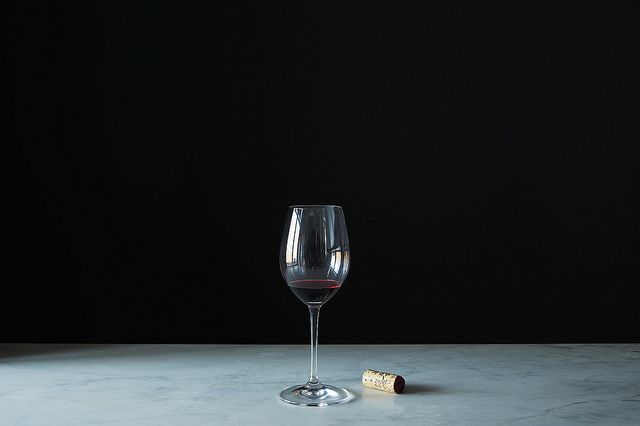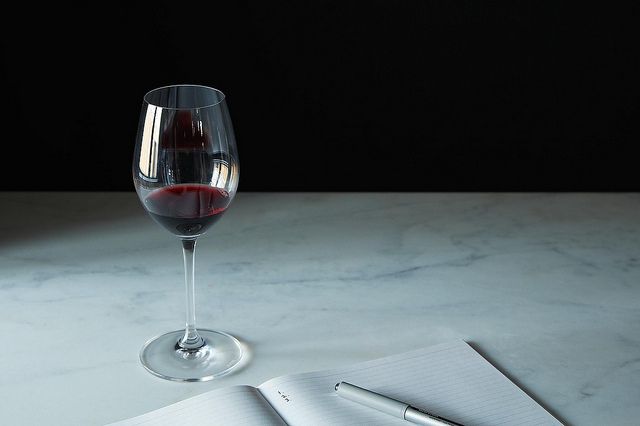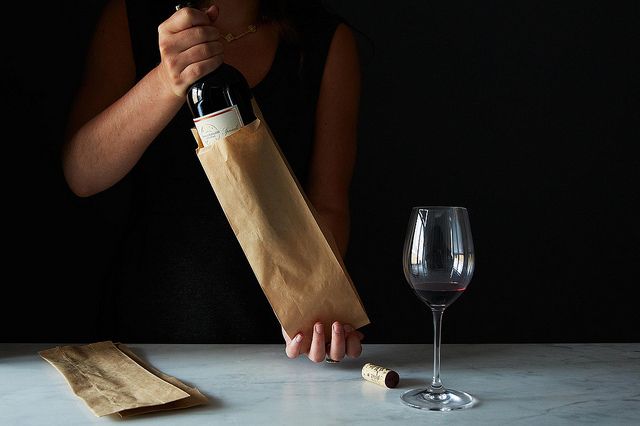We may have food down cold, but wine? This is where we'll conquer it. Join us; we don't want to drink alone.
Today: Wine tasting is fun! Here's how to do it at home -- no fancy equipment required.

The snazziest trick for running a wine tasting may be to pour the wines into black glasses. The thinking is that if you can’t see the color of the wine, then most people cannot actually tell if the wine is white or red. By simulating an objective tasting environment, you come away with your true impressions of the wines without the influence of assumptions or preconceived opinion.
Drinking from black glasses is an eye-opening exercise, certainly, but you don't need them for a fun and entertaining tasting. Here are a few tips to guide the way.
The Line Up
A direct approach is to choose examples from the four primary categories of wine: sparkling, rosé, white, and red. You’ll cover a lot of ground, and this approach may work best if your goal is to see which wine tastes best with a particular food you’ve also served.
Another strategy is to choose a grape -- Malbec, say -- and pour an example from the Old World and another example from the New World, then compare and contrast the two. Sometimes the difference is striking, like when a Malbec from the Cahors region of France (its Old World, traditional home) sits next to a Malbec from the New World of Argentina. If your goal is to really get to know any particular grape and its different manifestations around the world, this is the way to go.

The Food
A wine tasting is, by nature, an experiment, which frees you to also experiment with the food you serve with it. In summer, you may want to try two different recipes with tomatoes, and then vote on which wine you and your friends think work best with each.
Planning your tasting by starting with the food can also help you to determine which wines you’ll include in the tasting: if you’ll be using the grill, for example, you may want to try two or three different red wines to see which hold up best to the char.
Mechanics and Logistics
You may want to pace the tasting by pouring a new wine every 15 minutes, say, or when you set out a new dish; these options work well when your guests are standing up cocktail-party style. If your guests will be seated for most of the time, you may want to pour out each wine in advance of the tasting.

For an inexpensive variation on a blind tasting, simply tuck each bottle into a brown paper bag that’s tall enough to cover the label and the shape of the bottle. One person in your group will need to know which wine is which, of course -- they’ll note the wine and its corresponding bottle, and can reveal the wines once the tasting is finished.
For a slightly geekier experience, set out notepads for your guests to jot down their thoughts about the wines as they taste through them. Or, be a bit more 21st century and encourage guests to use cell phones to share photos and comments about the wines that they like.
The happy consequence of an informal wine tasting is that you’ll end up with information that can guide your wine choices for weeks to come. You may learn to steer totally clear of a grape or region or style, and you may also discover your new favorite go-to bottle. Either way, be sure to let us know what you find!
Photos by James Ransom




See what other Food52 readers are saying.